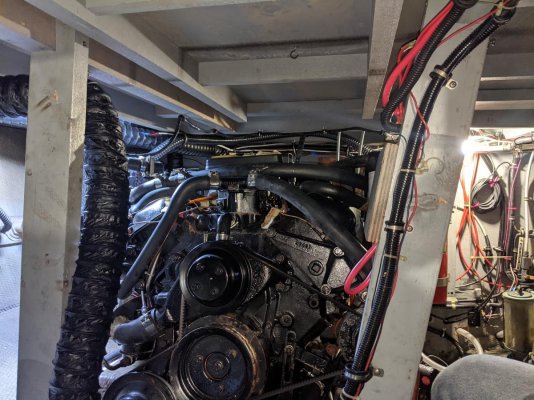Boy, that's a pablum article, for sure. As is typical of mainstream yachting magazine articles, few of them written by professional boatwrights, this article simply broad-brushes some very significant technical issues related to marine fuel tanks. While the article (perhaps) is food for thought, it's little more than eye candy.
In my opinion, while the article suggests 15 to 20 years as end-of-life for tankage, this may be the only factual, useful information in the article. And for every journalist that suggests a 15-year service life for tankage, there will be a bozillion anecdotal responses by others braying that "...mine are black iron, have lasted for 40 years, and are PERFECT." "...I add (insert your own brand here) mouse milk to my fuel, and it works GREAT." "...Make your tanks out of monel. They'll last forever." etc. There may be more miscellaneous misinformation extent on the WWW (and in yachting magazines!) regarding marine fuel tanks than Carter has pills.
Very telling from the article is the very first picture of the workers at Tiara, installing a plastic tank into a new 38LS. And the tell? IT'S GOING IN BEFORE THE DECK GOES ON. So how come the journalist isn't commenting on this absolutely ridiculous oh-so-common practice by production yacht manufacturers? Is there any such thing as objective journalism any more?
Further subtle contradictions in reality lay in the paragraphs in the article referring to fiberglass tankage, once used by Hatteras and Bertram, (and currently by other unnamed but "quality" builders such as Pacific Asian Enterprises). And that reality is that Bertram, to name only one, has had MULTIPLE reported failures of their fiberglass tankage, forcing (typically) aluminum replacement.
And "fantastic plastic"? Any claims by ANYONE that plastic (a generic term for a multiplicity of non-metallic materials) tankage will last for the life of the boat is full of more stuff than a christmas goose. And admittedly, this article does NOT make this claim-good on 'em. Plastic may be arguably a better choice than others for new construction, but no panacea for poor installation practices (foaming in place? Please, NOOOOOOOO....). And, given the practicalities of rotomolding, forcing significant compromise in replacement plastic tankage due to installation issues. The "...material for the future?" Well, I'm not likely to bet on ANY petroleum product as a "material for the future".
So is there any real solution to the financial conundrum of fuel tank issues for both the shareholders of major yacht manufacturing companies, and us poor slobs left holding the bag with failed fuel tanks (and water/holding as well) while trying to deal with poor installation practices and poor material choices by the builders? No, not unless and until we, the yachting "public", start to nag, bray, lobby, yell, demand, and cajole those yachting professional boatwrights that service BOTH sides of the owner/builder fence.
Cajole them to PLEASE, PLEASE, PLEASE acknowledge that tankage has a finite service life. PLEASE, PLEASE, PLEASE provide soft patches above equipment areas on boats. If the tankage is installed in the engine room, please provide a soft patch in not only the engine room ceiling, but in the salon ceiling above, to allow major equipment to be removed from our boats intact. Forcing downstream owners, left with failed tankage after 15, 20, 25 years of service life to use a sawzall to effect tankage removal is reprehensible, and the boating industry should be ashamed. And we, who PAY for this practice, should demand better from our suppliers.
Sorry for this rant, but as a veteran of way too many marine tank failures that could have been easily remediated by some sound forethought from the various naval architects and builders, it's a hot button for me.
Regards,
Pete







